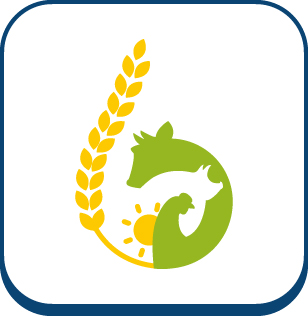A long time interval since the last meal impairs farrowing progress in sows
Abstract. Two trials were carried out on crossbred Large White × Landrace sows in a demonstration farm in summer 2020 (T1) and 2021 (T2) to characterize the birth intervals and farrowing duration associated to the time interval since the last meal. In T1, farrowing of sows from 5 batches were observed from 07:00 AM to 08:00 PM, corresponding to the working hours of the technical team, called ‘the day’ in contrast to ‘the night’ when no worker was in the farrowing unit. Sows were fed manually once (08:00 AM), twice (08:00 AM, 05:00 PM) or 3 times (08:00 AM, 12:30 PM, 5 PM) a day from the arrival in the farrowing unit to the farrowing day and the absence of feed in the trough was checked 15 min after the meal. In T2, two feed delivery times were automated through the use of electronic feeders. Video recordings were used to measure when the last meal initiated before farrowing occurred and the time of births. After farrowing, piglets were classified as born alive or stillborn piglets and weighed. Data obtained from sows that received farrowing assistance or had health problems (lameness, fever) were removed from the data set. Finally, data were collected on 37 sows from T1 and 63 from T2. The average parity (T1: 2.5, T2: 3.0), birth weight (T1: 1.33, T2: 1.37 kg), sow’s body weight (T1: 285, T2: 286 kg) and backfat thickness (T1: 21.2, T2: 20.1 mm) were not different between T1 and T2 (P>0.10), but litter size was higher in T2 (18.7 vs 16.9 total born piglet (TB)/litter, P=0.02). Thereafter, sows were categorized depending on the time interval since the last meal: S (≤3 h), M (4-8 h) and L (≥9). Farrowing progression was compared until the 15th born piglets from litters with at least 15 TB (T1: n=27, T2: n=59). Compared to T1 sows (all observed during the day), most of L sows and 2/3 of M sows farrowed during the night in T2. In T1, farrowing progression seemed similar in S and M groups, but worse in L group. Similar results were obtained in T2 when data from sows that farrowed during the day or the night were considered separately: progression was similar in S and M groups during the day and slower in L compared to M during the night. These results support an increase in meal frequency before farrowing to avoid long interval between the last meal and the farrowing onset.
Fiche technique
Titre :
A long time interval since the last meal impairs farrowing progress in sows
Date sortie / parution :
2022
Référence :
73rd Annual Meeting of the European Federation of Animal Science (EAAP), Porto, Portugal, 5-9 septembre 2022
Auteur
Autres documents
In-depth analysis of supernumerary piglets management using new functionalities of PertMat
Abstract. The expert tool PertMat developed by Ifip-Institut du Porc performs automatic pre-weaning mortality profiling and detection of main risk factors in pig farms. First results showed that large litter…
Publié en 2022Genetic effect on the feed to muscle gain ratio of growing purebred pigs
The general aim of the national EFFISCAN project was to investigate the interest of using computed tomography to access new criteria related to body composition and feed efficiency. The specific…
Publié en 2022Individual trajectories of pig farming in France: mechanisms, determinants and prospects
Abstract. Carried out in 2021 and supported by the French pig interprofession Inaporc, this study described how the structural concentration of pig farms operates at the individual scale and explains…
Publié en 2022Effects of restricted feeding and sex on the feed to muscle gain ratio of growing pigs
Visuels d'intervention (EAAP 2022) à Porto, Portugal, le 5-9 septembre 2022. Abstract. The aim of the study was to determine tissular growth performance by using computed tomography and to test…
Publié en 2022







